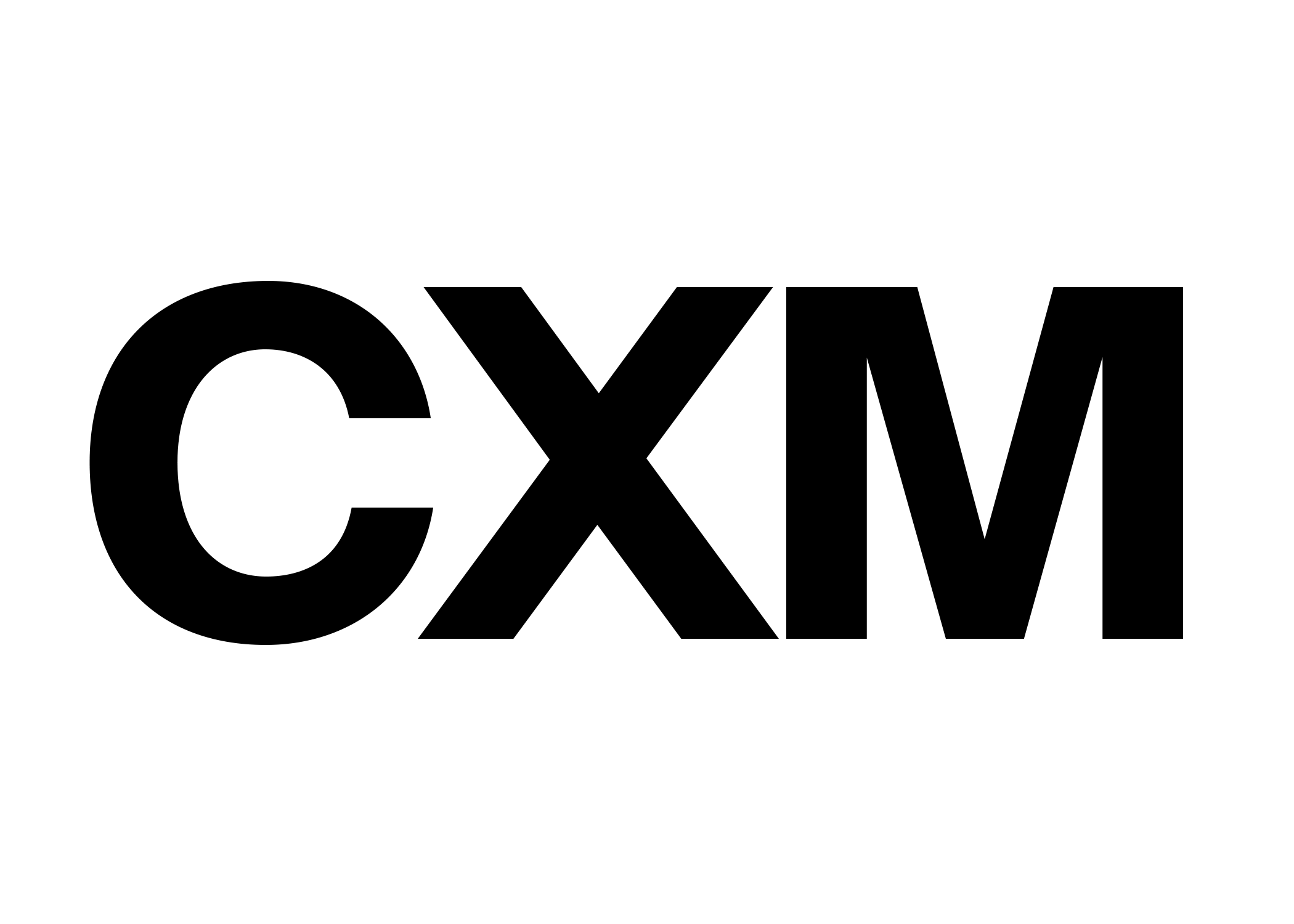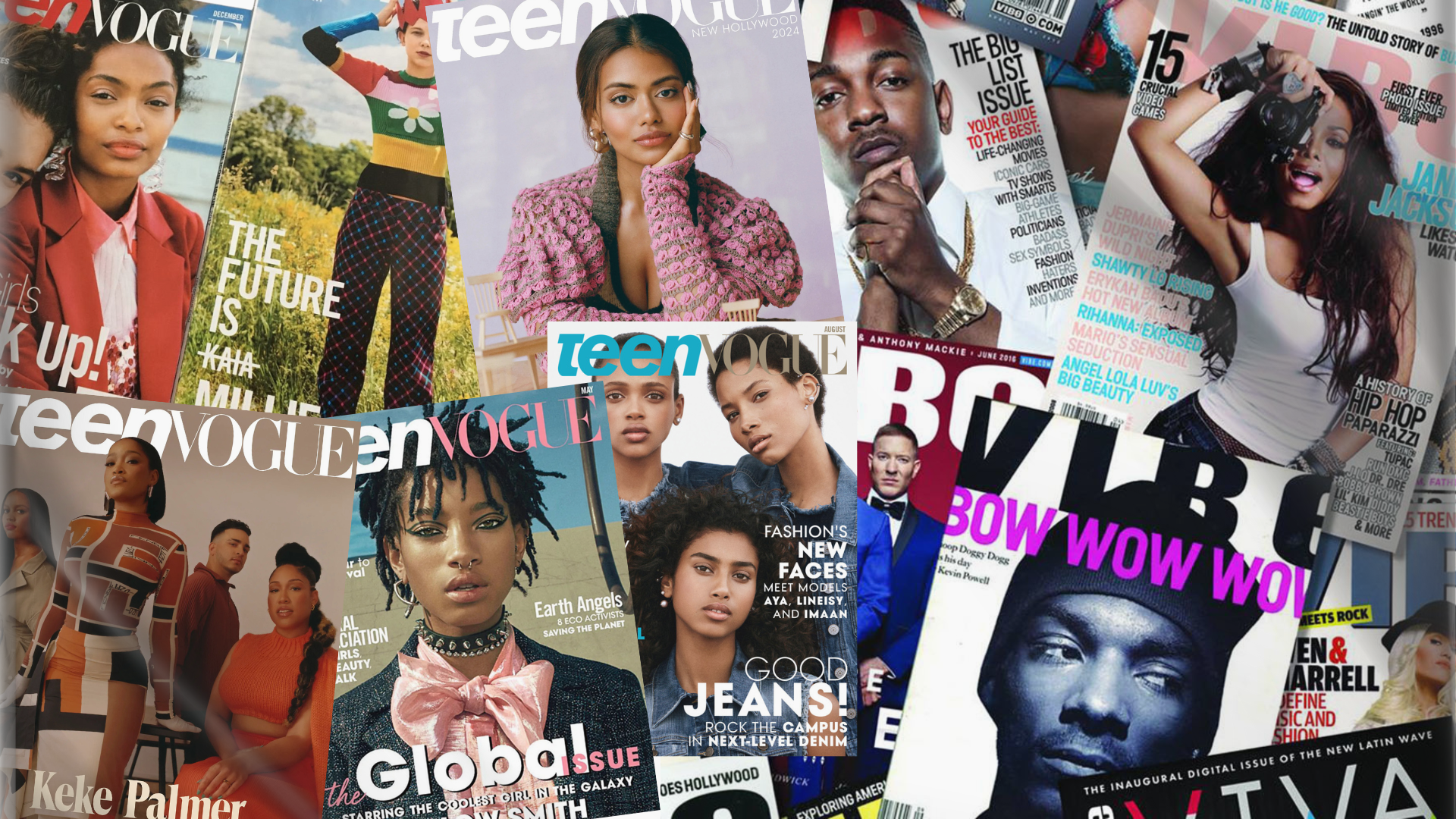What happens when the oppressors control the media?
This year, we’re watching this question play out in real time through media consolidation, a process where large media conglomerates buy up smaller outlets, leading to staff cuts and to centralizing decisions under the guise of efficiency.
However, what’s lost are the identities these outlets have formed with their audiences and a shrinking space for journalism rooted in truth and accountability—stories that matter for society and where historically marginalized people feel seen. This year, we’re witnessing entire newsrooms, outlets, and publications disappear faster than they can rebuild their identities.
On Monday, November 3, Teen Vogue was announced to merge with Vogue to expand Vogue’s ecosystem.
Vogue announced that “Teen Vogue will focus its content on career development, cultural leadership and other issues that matter most to young people.”
Coming as a surprise to many, it resulted in eliminating about 70% of its employees, including women of color and its politics team.
The union representing writers at Teen Vogue released a statement condemning Vogue’s decision, saying, “management plans to lay off six of our members, most of whom are BIPOC women or trans, including Teen Vogue’s Politics Editor — continuing the trend of layoffs at Condé disproportionately impacting marginalized employees.
“Nearly all of these staffers identify as LGBTQ. As of today, only one woman of color remains on the editorial staff at Teen Vogue.”
Former styles editor Aiyana Ishmael said in a social media post that she was one of the two Black women at the publication.
“Now, there are no Black women at Teen Vogue and that is incredibly painful to think about,” said Ishamel.
In an Instagram post, former Teen Vogue editor in chief Elaine Welteroth said, “Teen Vogue was a once-in-a-generation experiment in what happens when you hand the mic to young people from diverse backgrounds and take their voices seriously. That era set a new standard in media and showed the power of trusting young people with real news and real stories.
“Losing Teen Vogue’s newsroom is more than a business decision—it’s a cultural loss at a time when we need reliable journalism more than ever.”
Under Elaine Welteroth, editor in chief of Teen Vogue beginning in 2016, the publication began shifting and amped up its coverage of sociopolitical issues. It ran stories covering the war in Gaza, New York’s new mayor Zohran Mamdani, critiques of Donald Trump, and immigration.
Oddly enough, or perhaps conveniently, this merger was announced a day before the mayoral election that was held on Tuesday, November 4, and this kind of systemic cutting has been happening much more frequently throughout 2025.
Vibe magazine, a publication focused on R&B and hip-hop music, is another example of a major cultural staple losing its identity under the language of “expansion.”
Back in October, Penske Media announced that Vibe would merge with Rolling Stone.
Julian Holguin, the CEO of Rolling Stone, said as part of the move the company would “level up [its] hip-hop and R&B coverage,” as well as invest in “video, podcasts, long-form journalism, social media, and experiential opportunities.” Many found this decision questionable, when this merger has caused layoffs for several women of color from Vibe.
Former R&B reporters Mya Abraham and DeMicia Inman announced as the news broke that their positions had been eliminated.
Soon after the merger was announced, Vibe and Rolling Stone posted job listings for a new head of the Vibe brand, a video and podcast host, and an events producer. If that’s the case, why lay off the staff who already carry Vibe’s voice and identity? Vibe and Rolling Stone both may have built reputations on being disruptive; however, Vibe is rooted in Black culture in ways that sit outside Rolling Stone’s center of gravity.
Teen Vogue and Vibe stood at different but overlapping intersections of culture and politics. Teen Vogue gave young readers a place to engage critically with democracy and social justice. Vibe served as a cornerstone of Black music journalism, archiving sounds, voices, and movements that mainstream outlets may often sideline or flatten.
With these consolidations, the unique voices and identities—stories that center marginalized groups—are less likely to be heard, especially from the perspectives of the marginalized themselves. These parent companies may frame consolidation as being for the sake of expansion, but it’s clear that it's more self-serving than helpful.
In a recent “Shatter the Standards” a Substack column, writer Mina Abdel pointed out how philosopher Olúfẹ́mi O. Táíwò labeled media consolidation such as this as “Elite Capture.”
Táíwò defined “Elite Capture” as “the advantaged few in a group steer the resources and political direction of organizations or movements toward their narrower interests and aims.”
Media consolidation isn’t just a business problem. It creates the exact media environment where marginalized voices disappear and fewer outlets remain, and as a result it becomes easier for political actors and conglomerates to exert pressure, control the narrative, and silence criticism.
I can't express enough how alarming this is, especially during a time when journalism is more important than ever. These media consolidations are part of a string of events that target outlets striving to keep people informed.
It’s not just happening inside private companies, but also within broadcasting that ties in politically as well. This past summer, PBS and NPR faced efforts to strip away federal funding because the President of the United States claimed these broadcast stations have “liberal bias” toward his indecency and hyperbolic behavior.
Even if these major networks can withstand it, the ones who would be hit the hardest are local stations—especially in rural areas—as they heavily rely on federal funding to keep running. As political scientists Gregory J. Martin and Joshua McCrain show in their research on media consolidation, consolidation pushes newsrooms toward national political coverage that can be cheaply reused instead of coverage tailored to local races and local officials. In their words, this shift “can… weaken the accountability relationship between voters and their elected representatives at the local level.”
In October, NBC News laid off approximately 150 employees—several from teams covering Black, Latino, Asian American, and LGBTQ+ communities.
Meanwhile, Sinclair Inc., one of the largest owners of local TV stations and widely regarded as politically conservative, owns over 185 TV stations affiliated with ABC, NBC, CBS, FOX, and The CW. Known for its right-wing conservative slant, it has been accused of spreading disinformation and running centrally scripted promos at its local stations.
Dozens of anchors were required to read a company-provided message accusing other media of “fake news” and of pushing personal agendas: “the troubling trend of irresponsible, one-sided news stories plaguing our country.”
As political scientists Gregory J. Martin and Joshua McCrain show in their research on media consolidation, consolidation pushes newsrooms toward national political coverage that can be cheaply reused instead of coverage tailored to local races and local officials. In their words, this shift “can… weaken the accountability relationship between voters and their elected representatives at the local level.”
Not only that, the FCC—who are responsible for managing the public airwaves and placing rules and regulations to ensure that communication across networks is reliable and fair—has a new chairman named Brendan Carr, who was appointed by Donald Trump back in January 2025.
In September 2025, Brendan Carr appeared on conservative commentator Benny Johnson’s podcast and suggested that ABC affiliates could face scrutiny over Jimmy Kimmel’s on-air comments about the killing of Charlie Kirk. Amid the backlash, ABC suspended Kimmel’s show, and several affiliates temporarily chose not to air his return.
What makes this moment so alarming is that it edges into an attack on freedom of speech. It may not be outright censorship, but it’s the kind of pressure that forces outlets to soften their political commentary to appease those who are in power and to protect themselves.
However you may feel about Kimmel’s joke, the issue is how it reveals that when those who are in charge of the media hint at consequences for speech they don’t like, they’re not protecting the public—they’re shrinking the range of what we’re allowed to hear.
As many of these small outlets and publications are being stripped of their autonomy by huge conglomerates, we’re losing platforms that provide a voice for the historically marginalized and cover stories that bigger outlets may ignore.
At the same time, we’re witnessing the rise of brain-rot content; red-pilled pipelines pushing more men toward toxic ideologies; and a president who constantly speaks in hyperbole, amplifies misinformation, and openly embraces anti-intellectualism.
So, where do we go from here?
In moments like this, we have to support independent journalism—outlets that are speaking and providing a platform for the historically marginalized. Outlets such as Andscape, Blavity, Cxmmunity Media, Mother Jones, Grown Mag, Slow Factory, and of course supporting these writers’ and journalists’ Substacks, are the kinds of places that still make it possible for people to know what’s really happening, not just what’s profitable.
As Ida B. Wells once said, “The way to right wrongs is to turn the light of truth upon them,” and “the people must know before they can act, and there is no educator to compare with the press.”




.png)